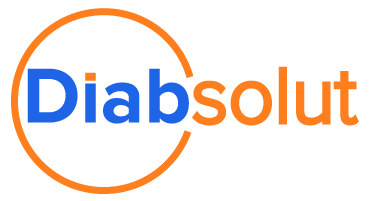Salesforce Service Cloud Spotlight: Using Field Service and Service Cloud to Maximize Results for High-Tech Solutions
Author: Matt McCallum
 In our last Salesforce Service Cloud Spotlight blog we gave a breakdown of exactly what Service Cloud is and can do. To summarize, it’s versatile—it:
In our last Salesforce Service Cloud Spotlight blog we gave a breakdown of exactly what Service Cloud is and can do. To summarize, it’s versatile—it:
- Enhances what organizations offer as far as communication and relationship management.
- Works equally well for profit or non-profit.
- Integrates well with other solutions.
- Helps with every aspect of Customer Service
That ability to integrate well with other solutions is something that shouldn’t be overlooked, particularly for those looking to maximize the benefits they’re seeing from their Field Service Management (FSM) solution.
In this blog, we’ll be taking a look at Service Cloud and Salesforce Field Service, formerly known as Salesforce Field Service Lightning (FSL). We’ll be offering practical information on how these two products work together to provide optimized high-tech results for FSM in real-world situations—so that Field Service organizations looking for an FSM solution can make a more informed decision.
Service-Level Agreements (SLAs)
SLAs are a huge driver when it comes to selecting an FSM solution. They can’t be breached without resulting in heavy penalties for the contracted provider, they require specialized attention in terms of scheduling and priority, and often require complex coordination if security or credentials are a factor.
When FSM organizations go high-tech, they’re able to reach farther—providing service for organizations spanning from small businesses to enterprises on the leading edge of technology themselves:
- SLAs are essentially selling uptime, so Salesforce Service Cloud and Field Service’s ability to increase service efficiency is key to offering more reliability and options for SLA clients.
- Predicting failure, and then automatically notifying, navigating relevant info, coordinating efforts, prioritizing, and optimizing the response is what’s expected for next-level service.
Service Requests and Schedule Optimization
Many FS organizations prior to switching to a high-tech FSM solution rely on multiple steps and multiple systems to get their customers from point A to point B. The more complex the client’s needs, the more steps required, the higher the chance of error, and often the more people involved in order to come to a satisfactory resolution.
Conversely, what does a high-tech solution look like, specifically one involving Salesforce Service Cloud and Field Service working together?
What a Customer Service Representative sees:
- A client calls, emails, requests online help, etc., or an automatic service request is sent from the product that needs to be repaired.
- Information associated with that client/product is automatically brought up for the Customer Service Representative.
- The request is entered, and relevant information is supplied for a diagnosis and work order, all on one screen.
- The schedule is instantly updated and the client is able to receive all the information they need.
What happens automatically via the FSM solution:
- The case, as well as the client’s other associated information, is assessed, and a diagnosis is made.
- A work order is created.
- The work order and other necessary information, e.g.: special skills needed, security protocol, SLAs, specialized equipment or parts, are all accounted for.
- Built-in logic assesses all of the information and serves as an optimizer, updating the schedule.
- It finds the best fit for all of the requirements, as well as including information on priority, suitable technician availability, who is closest, etc.
- It provides a faster, more accurate solution than a human is able to provide—what the issue is, who to send, when to send them, and with what part and/or equipment.
- The entire process is then assessed to provide metrics for the FS organization’s improvement.
Real-World Examples of Maximized Results
From a small business trying to do more with less to a huge enterprise fielding 1000’s of service requests, they can be used to enable organizations to:
- Make the right decision the first time, in the most financially responsible way.
- Instant correct decisions improve customer relationships and lower employee stress.
- Dramatically decreases the time spent to make the decision, as well as the people needed to make it.
- Customize service for their clients, and better understand both their customers and their own business.
Real-world examples are endless, but include simplifying and automating:
- Service of data centers and storage arrays that house restricted information and sensitive data.
- g.: installing racks, or rack and stacks.
- Multi-day work, such as cabling or running fiber, which needs multiple people over an extended period of time.
- The system still optimizes what people need to go where and at what time, including outside resources that are needed.
- Responses to SLAs that utilize a 3rd party service provider.
- A high-tech solution not only accounts for this but learns their capacity and enables better load balancing.
If you’re trying to navigate all the information out there and want to find an FSM solution that’s the right fit for your organization, contact us.
Search
Trending Topics
- E18: Click FSE Migration to Salesforce Field Service – Java With Sugar Podcast
- E17: The Process of Migrating from a Product That Is Retiring – Java With Sugar Podcast
- E16: Decoding FSE’s End-of-Life and Common Migration Practices – Java With Sugar Podcast
- A Dual Approach to Efficiency in Field Service Management: Asset-Centric vs. Customer-Centric Models
- E15: Trends and Limitations in AI – Java With Sugar Podcast
- Enhancing Field Service Operations with SFS-X
- E14: Our Point of View and Insights on AI – Java With Sugar Podcast
- E13: What Is Artificial Intelligence and Why Is It Beneficial for You? – Java With Sugar Podcast
- AI Ethics: What Is It and Why Does It Matter?
- 3 Tips to Improve Your Strategy and ROI When Selecting SaaS Solutions
